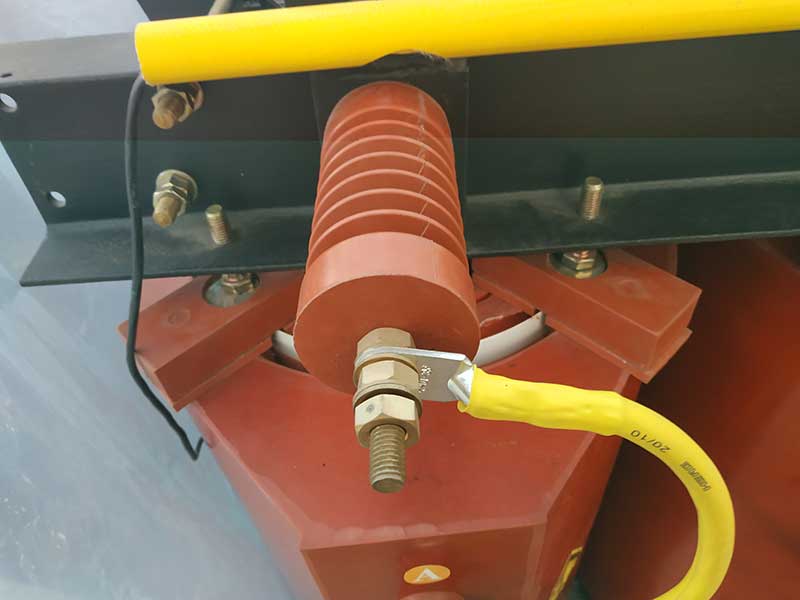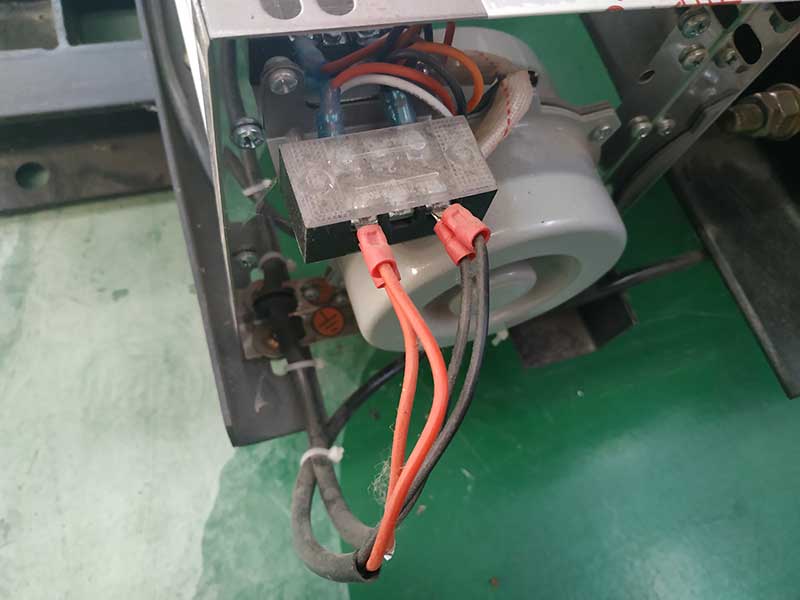Inventory of 7 types of faults of dry-type transformer noise Judgment method and solution
01 Resonance problems of fans, casings, and other components
■ Reason: The resonance of the fan, shell, and other parts will produce noise, which is generally mistaken for the noise of the transformer.■ Judgment method:
1) Shell: Press the aluminum plate (or steel plate) of the shell with your hand to see if the noise changes. If there is a change, it means that the shell is resonating.
2) Fan: Use a dry long wooden stick to push the casing of each fan to see if the noise changes. If there is a change, it means that the fan is resonating.
3) Other parts: Use a dry long wooden stick to push each part of the transformer (such as: wheels, fan brackets, etc.) to see if the noise changes. If there is a change, it means that the parts are resonating.
■ Solution:
1) Check whether the aluminum plate (or steel plate) of the shell is loose. It may be deformed during installation. You need to tighten the screws of the shell, fix the aluminum plate of the shell, and correct the deformed part. the
2) To see if the fan is loose, you need to tighten the fastening bolts of the fan, and place a small piece of rubber between the fan and the fan bracket to solve the problem of fan vibration.
3) If the parts of the transformer are loose, they need to be fixed.
02 installation problems
■ Reason: Poor installation will aggravate the vibration of the transformer and amplify the noise of the transformer.■ Judgment method:
1) The foundation of the transformer is not firm or flat (one corner is suspended), or the bottom plate is too thin.
2) Using channel steel to erect the transformer will increase the noise.
■ Solution:
1) The installation unit shall modify the original installation method.
2) An anti-vibration rubber pad is added under the transformer trolley to solve part of the noise.

03 Influence of installation environment
■ Reason: The operating environment affects the noise of the transformer, and the unfavorable environment increases the noise of the transformer by 3dB to 7dB.■ Judgment method:
1) The transformer room is large and empty, with no other equipment and echoes.
2) The transformer is too close to the wall, less than 1 meter. The transformer is placed at the corner, and the noise reflected by the wall is superimposed on the noise of the transformer, which increases the noise.
3) Originally used oil change, changing to dry change will affect the noise of the transformer. The reason is that the crude oil transformer chamber is relatively narrow, and there is an oil leakage chamber and an oil leakage hole. The transformer is like being placed on a sound box.
■ Solution:
Some sound-absorbing materials can be properly installed indoors.
04 Vibration problem of busbar bridge
■ Reason: Due to the large current passing through the side-by-side busbars, the busbars vibrate due to the leakage magnetic field. The vibration of the bus bridge will seriously affect the noise of the transformer, which will increase the noise of the transformer by more than 15dB, which is difficult to judge. Generally, users and installation units will mistake it for the noise of the transformer.■ Judgment method:
1) The noise varies with the load.
2) Use a wooden stick to forcefully push the busbar bridge. If the noise changes, it is considered that the busbar bridge is resonating.
3) The bus bar vibrates in the bridge frame, and it is useless to use wooden sticks to top it. It is necessary to open the busbar bridge cover to check whether the busbar is fixed.
■ Solution:
1) It is mainly to destroy the resonance condition of the busbar bridge, tighten or loosen the boom screws.
2) Open the busbar bridge cover and fix the busbar.
3) The low-voltage outgoing line adopts soft connection.
4) Ask the manufacturer of the busbar bridge to solve it.

05 Transformer core self-resonance
■ Reason: There is an electromagnetic attraction caused by magnetic flux leakage between the joints of the silicon steel sheets and the laminations.■ Judgment method:
1) The noise of the transformer is too loud, and the normal noise is mixed with other noises.
2) Transformer noise becomes wavy.
■ Solution:
1) Tighten the screws on the transformer, including the screws at both ends of the clamp, the through-hole screws, and the screws for the pad pressure screws.
2) Add anti-vibration pads under the transformer trolley to solve part of the noise.
06 Transformer coil self-resonance
■ Reason: When there is a load current passing through the winding, the magnetic flux leakage generated by the load current causes the vibration of the winding
■ Judgment method:
1) The noise of the transformer is too loud, and the noise is relatively low.
2) When the load of the transformer reaches a certain level, noise begins to appear, sometimes appearing and sometimes not appearing.
■ Solution:
1) Tighten all the screws of the spacer block to increase the axial compression force of the coil.
2) Loosen all the screws of the spacer, loosen all the bolts on the outgoing copper bar and the zero line copper bar, shake the low-voltage coil, move the high-voltage coil by 3 to 5 mm, and then tighten all the bolts.
07 Problems with the nature of the load
■ Reason: The voltage waveform of the transformer is distorted (such as resonance phenomenon), and noise is generated.■ Judgment method:
1) In addition to the noise of the transformer itself, the noise is also mixed with "cluck, cluck" noise.
2) In the process of operation, the transformer noise will suddenly increase sharply, and it will return to normal soon.
3) Check whether there are rectification equipment and frequency conversion equipment in the load.
■ Solution: The user may consider adding a device to reduce harmonics.
